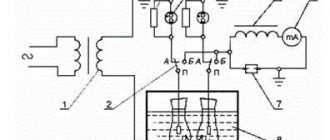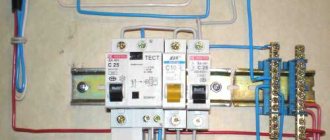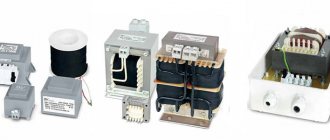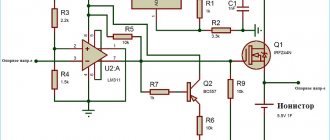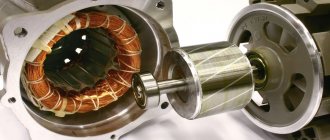The effect of electric current on a person is life-threatening. To create the safety of personnel working with electrical installations, various personal protective equipment is used. They are devices, devices, parts of devices that protect a worker from electric shock, exposure to high-tension electromagnetic radiation fields, and from an electric arc.
- Basics . They can withstand long-term exposure to voltage, so it is advisable to use them when performing electrical installation work without de-energizing devices from the network.
- Additional . Such protection is not able to fully protect a person from the effects of electric current, and therefore such means are used in conjunction with the main ones.
Expert opinion
Viktor Pavlovich Strebizh, lighting and electrical expert
Any questions ask me, I will help!
The ASU is used to receive, distribute, account for electrical energy consumption and monitor the correct load distribution. If there is something you don’t understand, write to me!
Why and in what electrical installations are dielectric boots and galoshes used?
The classification of the energy technical group of equipment includes design features, power, type of use, current frequency, and features of the premises being used.
Design features allow the installations to be divided into:
- open, that is, located outside the premises;
- closed, located in the room itself;
- sheltered from snow or rain by a canopy.
According to the power value, they are divided into existing electrical installations up to 1000 V and over 1000 V.
Regardless of the type of power equipment, the use of special clothing and safety shoes is extremely necessary. Their use allows you to protect a person from step voltage (voltage between two points on the surface of the earth, equal to the length of a person’s step).
Important: dielectric galoshes are used when working in electrical installations up to 1000 volts; they are marked with the symbol En , indicating the protective properties of the item and the manufacturing method. Dielectric boots are used in any closed electrical installations (in dry weather it is also permissible in open ones), regardless of the voltage class; they are designated by the letters Ev .
The production of elastic products is subject to the requirements of GOST 13385-78 “Special dielectric footwear made of polymer materials. Technical conditions".
Electrical switchboard complete with protection equipment up to 1000V
- Carrying out measurements.
- Replacement of safety inserts.
- Installation of insulating linings.
- Operations with switching devices.
- Installation of protective portable grounding.
Let's consider what is included in these types of protective equipment, the requirements for them and the features of application.
Basic personal protective equipment includes:
- Voltage indicators.
- Insulating rods.
- Isolated tool.
- Electrical clamps.
- Dielectric gloves.
- Portable grounding.
- Isolating devices.
- Shielding kits.
Additional
Such protections include:
Let's take a closer look at the basic personal protective equipment most often used in electrical installation work.
Dielectric gloves
These personal protective equipment protect the worker from electric shock during work up to 1 kV, and is the main one. When working above 1 kV, dielectric gloves are an additional means.
Insulating pliers
Such personal protective equipment is used when performing work to replace fuses. When working with voltages above 1 kV, additional protective equipment must be used together with insulated clamps: rubber dielectric gloves and a protective mask.
With voltages up to 1 kV, replacing fuses does not require the use of additional protective equipment. At this voltage (up to 1000 V), fuses can be changed without pliers, only with the help of gloves and safety glasses. If there are switches or other switching devices, before replacing the fuse links, it is necessary to de-energize the load circuit.
Clamp meter
Such a tool makes it possible to measure current, resistance and voltage in a circuit. They are designed to work indoors and outdoors in dry weather.
What kind of lighting do you prefer?
Built-in Chandelier
When measuring parameters, the operation of the circuit does not change and the circuit does not break. Depending on the parameters being measured, electrical clamps come in different types:
This tool can be used in electrical installations up to 10 kV. Clamp meters can be used to measure the network load, the power of various devices, check the operation of energy meters, and determine network parameters.
Voltage indicators
In electrical devices, voltage indicators are used to monitor the voltage on equipment elements. If the pointer is equipped with a voltage switch, you must set it to the correct mode before using it.
Types of special rubber shoes
Dielectric shoes include:
- bots;
- galoshes;
- boots.
Glued rubber galoshes
Glued overshoes are multilayer ring-shaped products. They consist of:
- rubber upper;
- similar grooved sole;
- backdrop made of paper or twill;
- thick knitted lining;
- internal elements that create additional strength.
Rubber color is beige or light gray.
Important: when working in regions with a tropical climate, textile material must be impregnated with an antiseptic.
Glued rubber boots
Dielectric boots differ from galoshes by the presence of a flap at the top. The flap is necessary to protect against liquid penetration.
The following requirements apply to the production of a bot:
- the height of the product must be at least 16 centimeters (including the folded collar);
- the thickness of the plantar part is at least 0.6 centimeters;
- The lining must be made of dielectric material.
Molded rubber boots
The production of molded models involves the production of blanks from a certain rubber composition, their further assembly, molding and vulcanization. At the final stage, burrs, press-outs and other deviations from the norm are removed. The entire product is cleaned.
According to GOST 13385-78, molded boots do not have internal reinforcing parts and a textile lining. Lapels are present, as in adhesive products.
PVC molded rubber boots
The design of the boots consists of:
- boot, narrower at the bottom and widened at the top;
- corrugated sole with a heel made of polymer material (rubber or PVC);
- internal textile lining.
Important : regardless of the type of shoes, the material used should not contain any hard or soft foreign bodies or bubbles (with the exception of the toe part), peeled elements, protrusion of rubber or PVC through the lining fabric, delamination of individual internal parts and other errors.
Storage and operating conditions
Storing safety shoes is a responsible process. The following conditions must be met:
- the presence of a dark closed room;
- the ambient temperature must be above 0 degrees Celsius (exceeding the 20-degree mark will negatively affect the quality of rubber products);
- availability of racks or wooden shelves in the warehouse;
- relative humidity requirements – 50-70%;
- The presence of special clothing and safety footwear in the immediate vicinity of heating units is unacceptable. It is allowed to keep items to be worn in relation to heating systems at a distance of one meter or more;
- close proximity to chemically aggressive environments: acids, alkalis, some liquids, technical oils can cause substances to enter the surface of products with subsequent damage.
Important: electrically resistant shoes are used in accordance with the rules for using protective equipment used in power plants. It is necessary to ensure that it does not receive mechanical damage due to exposure to hard, cutting objects, or chemically aggressive substances.
In a simplified version, it should be borne in mind that boots or galoshes are worn over existing clean and dry shoes. After completion of the work, the rubber products are removed and left on the territory of the electrical installation. If necessary, they are cleaned of dirt and dried.
News
- 13 Mar
SP 256.1325800.2016 “Electrical installations of residential and public buildings. Rules for design and installation"
SP 256.1325800.2016 “Electrical installations of residential and public buildings. Design rules and mon...
Completion of a set of works (inspection, design and installation work, construction and installation work, commissioning and commissioning) for the reconstruction of the customer's transformer substation: Moscow Region, Taldomsky district, town. Verbilki, st. Victory
Intellect LLC specialists completed a range of works (inspection, survey, design and installation work, construction and installation work, commissioning and commissioning...
The process of checking dielectric galoshes and bot
Electrical protective equipment is tested according to operational test standards to avoid accidents. During the production process, safety shoes are subjected to regular and extraordinary tests. Extraordinary checks are carried out; inspection of safety shoes reveals any damage. Tests are carried out according to approved regulatory documents by specially trained and certified personnel.
Test periods and frequency
The frequency of checking polymer bots is at least 3 times every 12 months. In some cases, the period is increased to 6 months. Ideally, footwear testing should be carried out before any work in an electrical installation.
The time allocated for testing protective equipment is one minute.
Is there a need to test new bots?
Electrical protective equipment received for use from manufacturers or warehouses, that is, new, must be tested in accordance with performance test standards.
Testing
Testing these safety shoes is virtually no different from testing dielectric gloves. Dielectric boots and galoshes in the bathtub must be installed horizontally. The water level should be within 45-55 mm from the edge of the lapels of the boots and 15-20 mm from the edge of the lapels of the galoshes.
Testing dielectric bot
The test voltage for dielectric boats should be 15 kV. The test duration is usually about 1 minute. The current that passes through the bots should be no more than 7.5 Ma. These safety shoes must be inspected once every three years. After the test, all test data must be recorded in a special log.
Testing dielectric galoshes
For dielectric galoshes, the test voltage is 3.5 kV. The duration of the test should also be 1 minute. The current that passes through the bots should not exceed 2 Ma. This protective attribute must be tested once a year. After verification, all data must also be entered into the journal.
Personal protective equipment in electrical installations. Kinds
In electrical installations with voltages over 1 kV, it is recommended to use auxiliary safety measures in the form of voltage alarms, which are fixed on the worker’s wrist or protective helmet, and are triggered when approaching live elements connected to voltage.
Expert opinion
Viktor Pavlovich Strebizh, lighting and electrical expert
Any questions ask me, I will help!
Clamp meters can be used to measure the network load, the power of various devices, check the operation of energy meters, and determine network parameters. If there is something you don’t understand, write to me!

